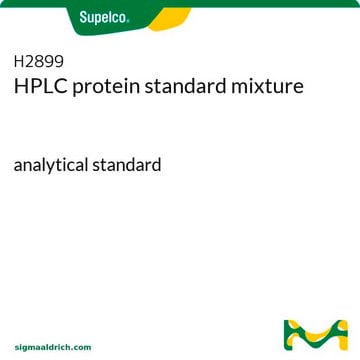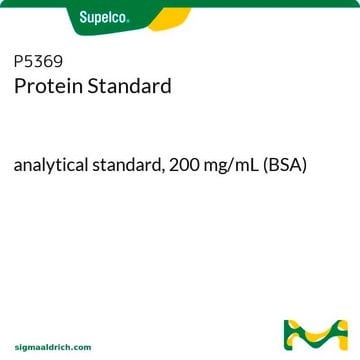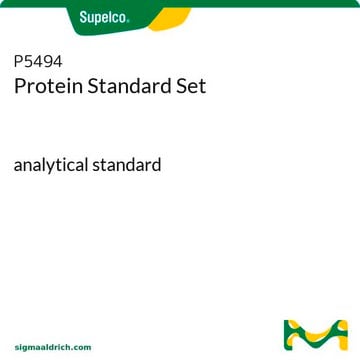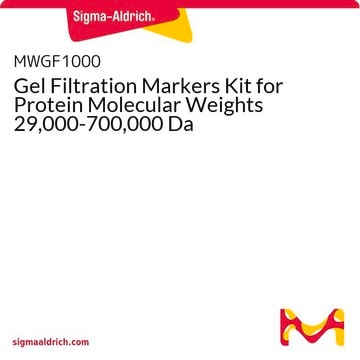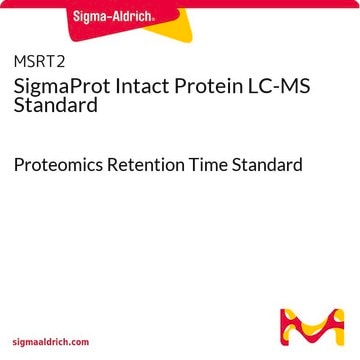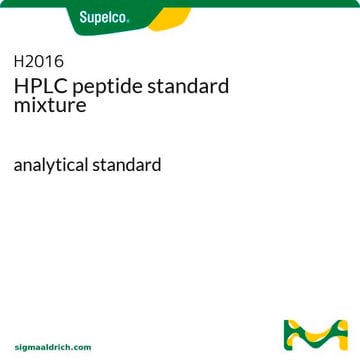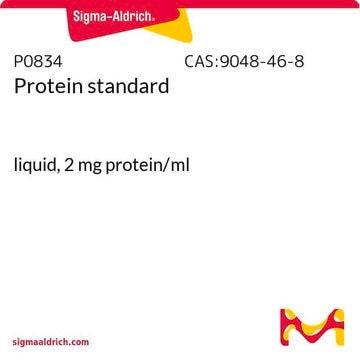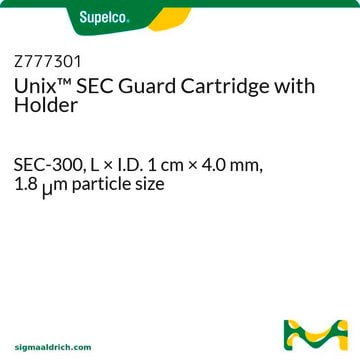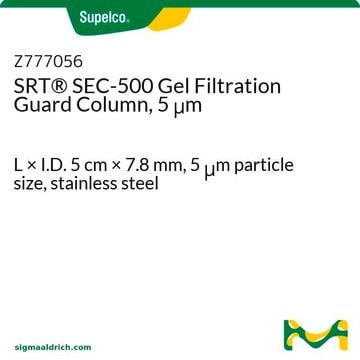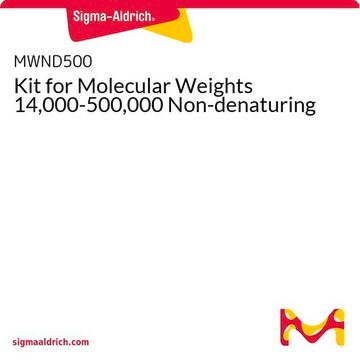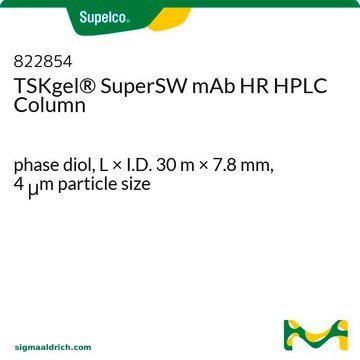If this product has an expiration or retest date, it will be shown on the Certificate of Analysis (COA, CofA). If there is no retest or expiration date listed on the product's COA, we do not have suitable stability data to determine a shelf life. For these products, the only date on the COA will be the release date; a retest, expiration, or use-by-date will not be displayed.
For all products, we recommend handling per defined conditions as printed in our product literature and website product descriptions. We recommend that products should be routinely inspected by customers to ensure they perform as expected.
For products without retest or expiration dates, our standard warranty of 1 year from the date of shipment is applicable.
For more information, please refer to the Product Dating Information document: https://www.sigmaaldrich.com/deepweb/assets/sigmaaldrich/marketing/global/documents/449/386/product-dating-information-mk.pdf
69385
Protein Standard Mix 15 - 600 kDa
for size exclusion chromatography
About This Item
Recommended Products
Quality Level
form
solid
mol wt
15-600 kDa
analyte chemical class(es)
amino acids, peptides, proteins
technique(s)
gel permeation chromatography (GPC): suitable
application(s)
clinical
food and beverages
pharmaceutical
format
neat
storage temp.
−20°C
General description
Components
Thyroglobulin bovine MW ~ 670 000 Da
γ-globulins from bovine blood MW ~ 150 000 Da
Ovalbumin MW~ 44 300 Da
Ribonuclease A type I-A MW ~ 13 700 Da
p-aminobenzoic acid (pABA) MW ~ 137 Da
Application
- Evaluation of selectivity and separation efficiency of size exclusion chromatography (SEC) to separate intact proteins by varying flow rate, size of silica particles and pore sizes in the column
- Simultaneous determination of oligomerized and nitrated proteins by size exclusion chromatography-high performance liquid chromatography-diode array detection (SEC-HPLC-DAD)
- Molecular weight separation of proteins by size-exclusion chromatography, formed upon O3 and NO2 induced oxidation, nitration, and oligomerization of bovine serum albumin (BSA) as a model protein
- Estimation of molecular masses of two recombinant proteins— TNF fluorescent sensor (BTN-Kat) and fluorescent sensor-inhibitor (ITN-Kat), by size exclusion chromatography (SEC) to evaluate their ability of binding and neutralizing tumor necrosis factor (TNF) in vitro and further serving as imaging labels for non-invasive analysis
related product
Signal Word
Danger
Hazard Statements
Precautionary Statements
Hazard Classifications
Acute Tox. 4 Dermal - Acute Tox. 4 Inhalation - Acute Tox. 4 Oral - Aquatic Chronic 3 - Resp. Sens. 1
Storage Class Code
11 - Combustible Solids
WGK
WGK 3
Flash Point(F)
Not applicable
Flash Point(C)
Not applicable
Choose from one of the most recent versions:
Already Own This Product?
Find documentation for the products that you have recently purchased in the Document Library.
Customers Also Viewed
Articles
Size-exclusion chromatography (SEC) columns and ready-to-use standards facilitate method development and increase robustness of protein SEC methods.
Characterize mAb monomers, aggregates, and fragments using SEC-UV workflow with Zenix® and Zenix®-C SEC columns.
Characterize mAb monomers, aggregates, and fragments using SEC-UV workflow with Zenix® and Zenix®-C SEC columns.
Characterize mAb monomers, aggregates, and fragments using SEC-UV workflow with Zenix® and Zenix®-C SEC columns.
-
How can I determine the shelf life / expiration / retest date of this product?
1 answer-
Helpful?
-
-
How is shipping temperature determined? And how is it related to the product storage temperature?
1 answer-
Products may be shipped at a different temperature than the recommended long-term storage temperature. If the product quality is sensitive to short-term exposure to conditions other than the recommended long-term storage, it will be shipped on wet or dry-ice. If the product quality is NOT affected by short-term exposure to conditions other than the recommended long-term storage, it will be shipped at ambient temperature. As shipping routes are configured for minimum transit times, shipping at ambient temperature helps control shipping costs for our customers. For more information, please refer to the Storage and Transport Conditions document: https://www.sigmaaldrich.com/deepweb/assets/sigmaaldrich/marketing/global/documents/316/622/storage-transport-conditions-mk.pdf
Helpful?
-
-
How do you re-suspend this?
1 answer-
Please see "Preparation Instructions" in the Data Sheet on the product page under "Documentation". https://www.sigmaaldrich.com/deepweb/assets/sigmaaldrich/product/documents/328/710/69385dat.pdf
Helpful?
-
Active Filters
Our team of scientists has experience in all areas of research including Life Science, Material Science, Chemical Synthesis, Chromatography, Analytical and many others.
Contact Technical Service